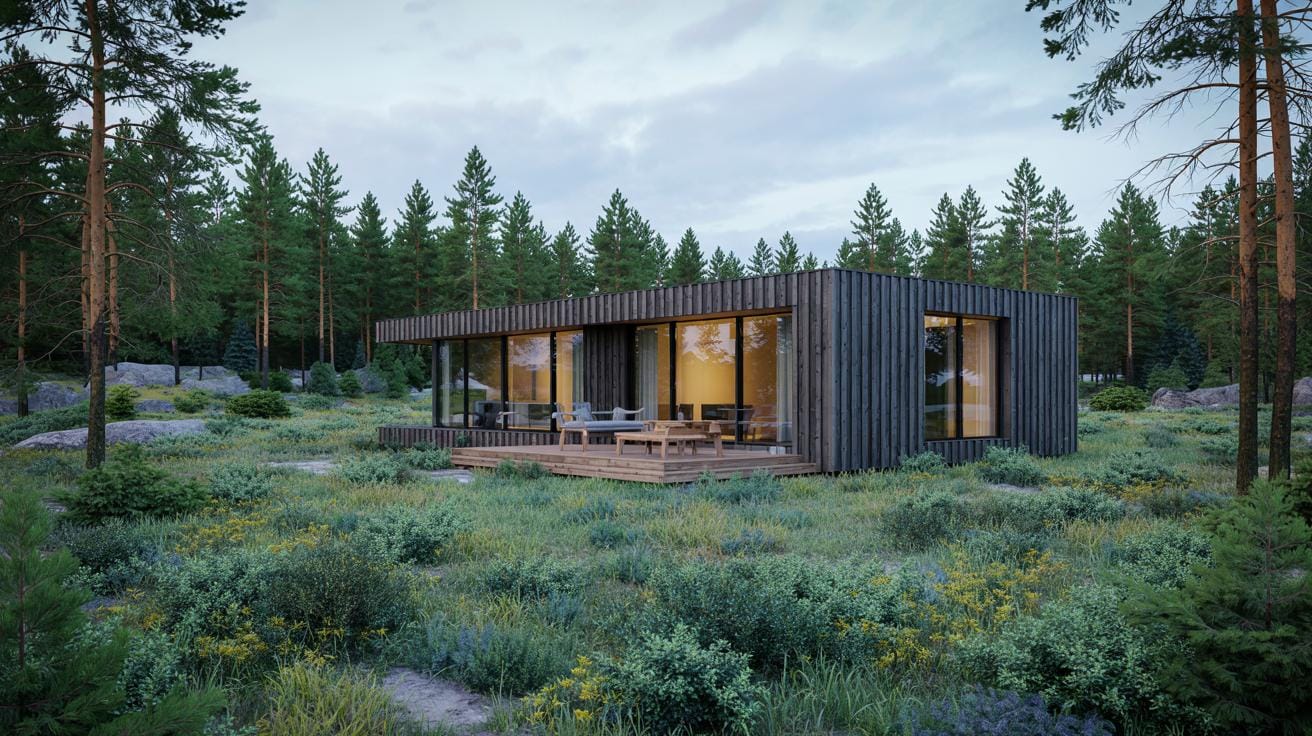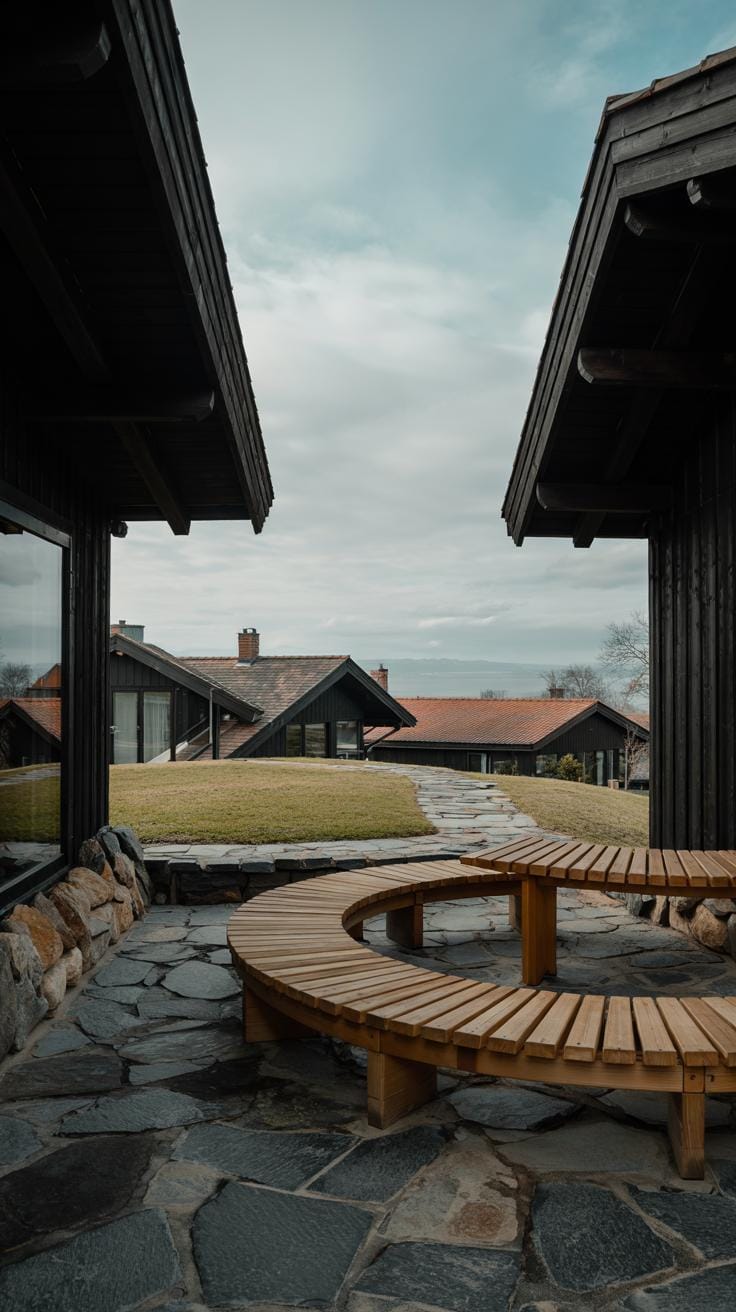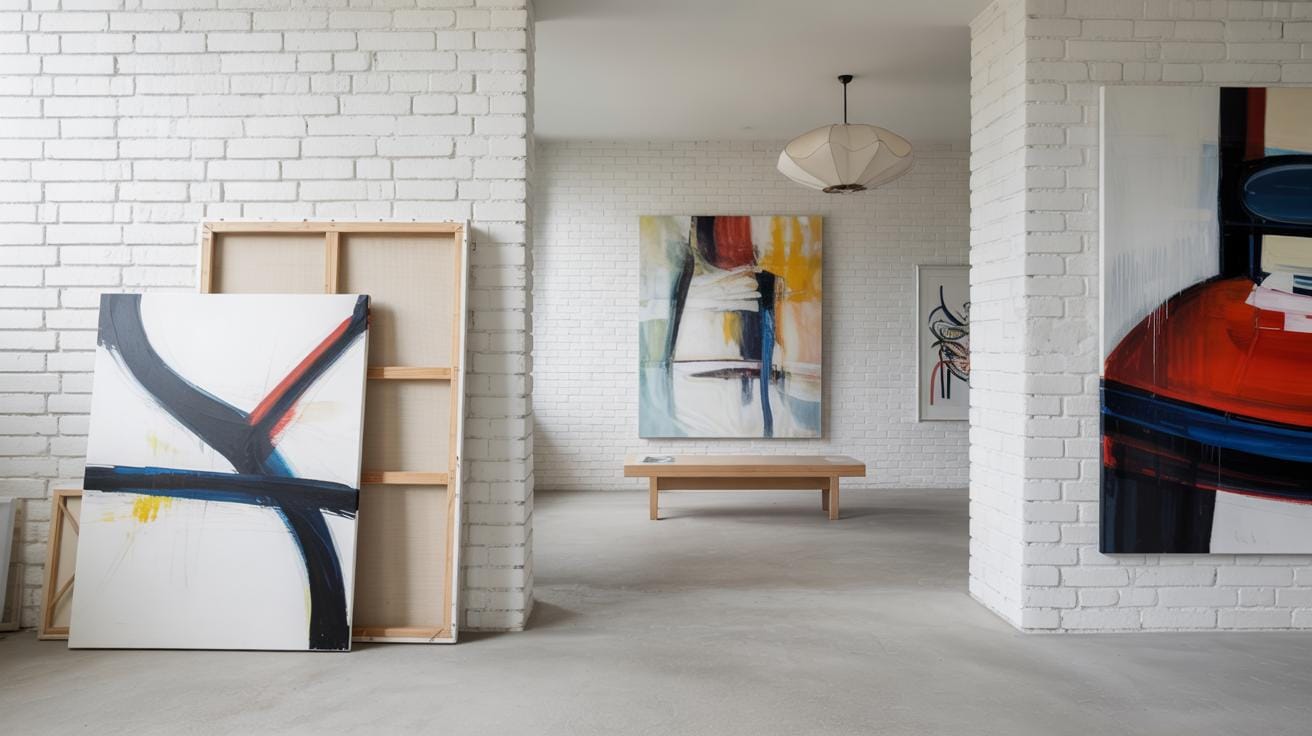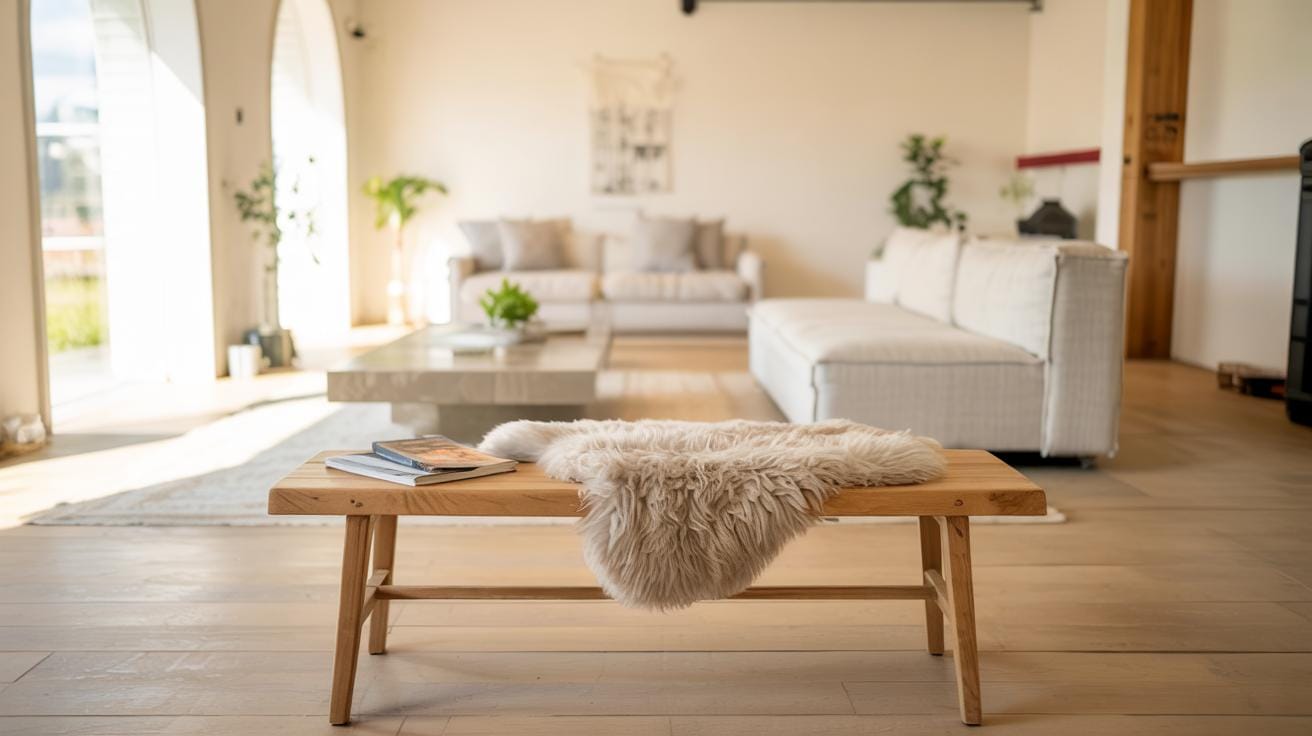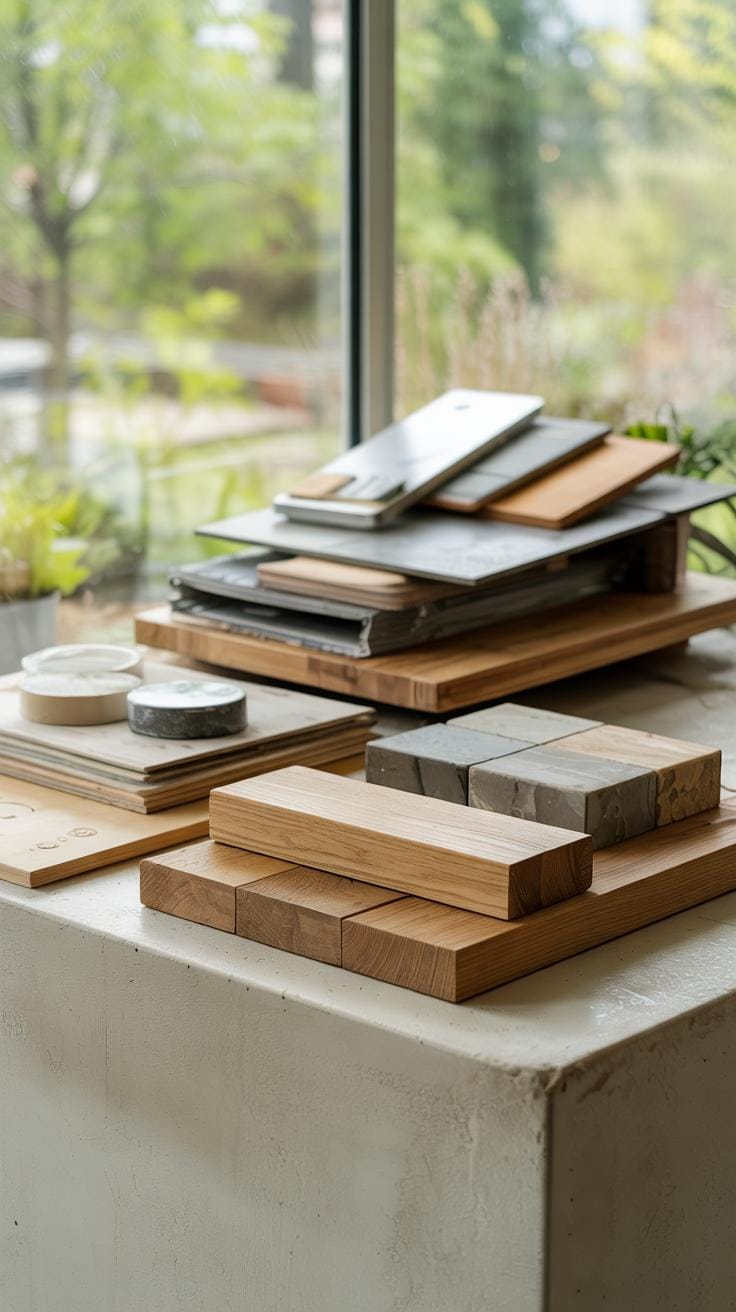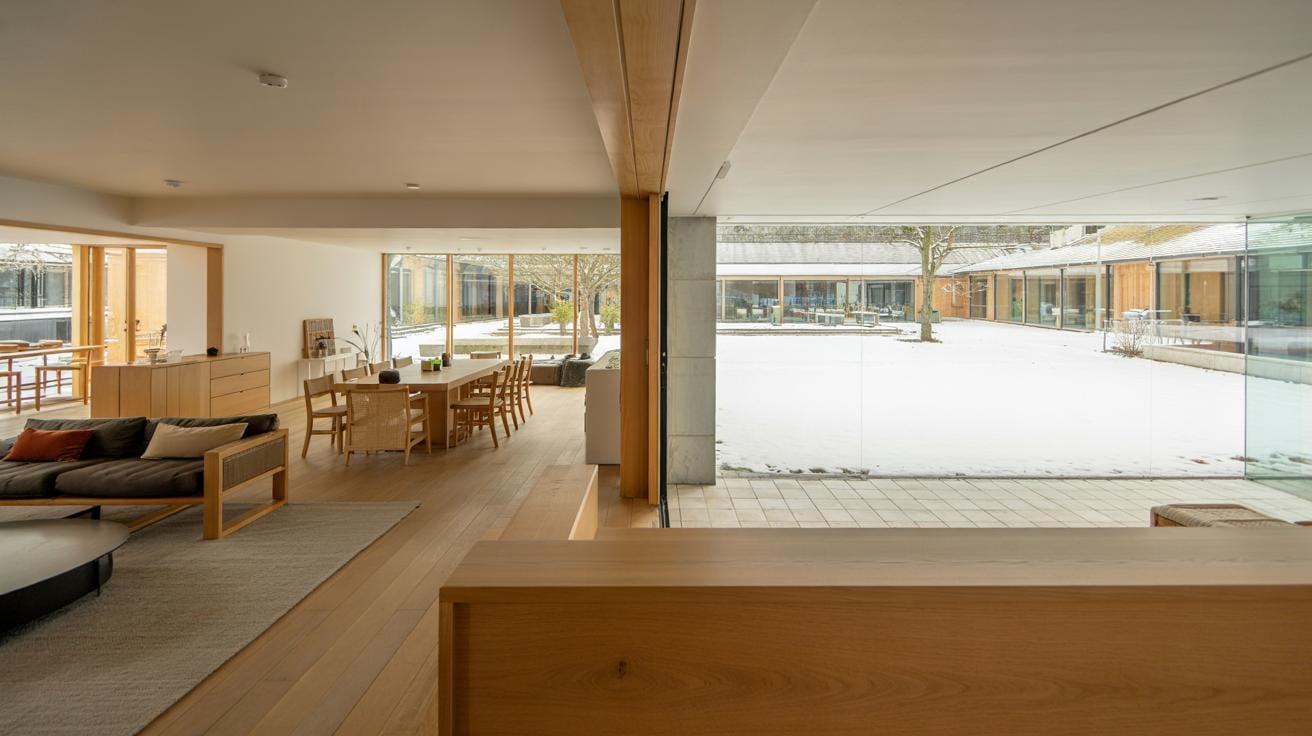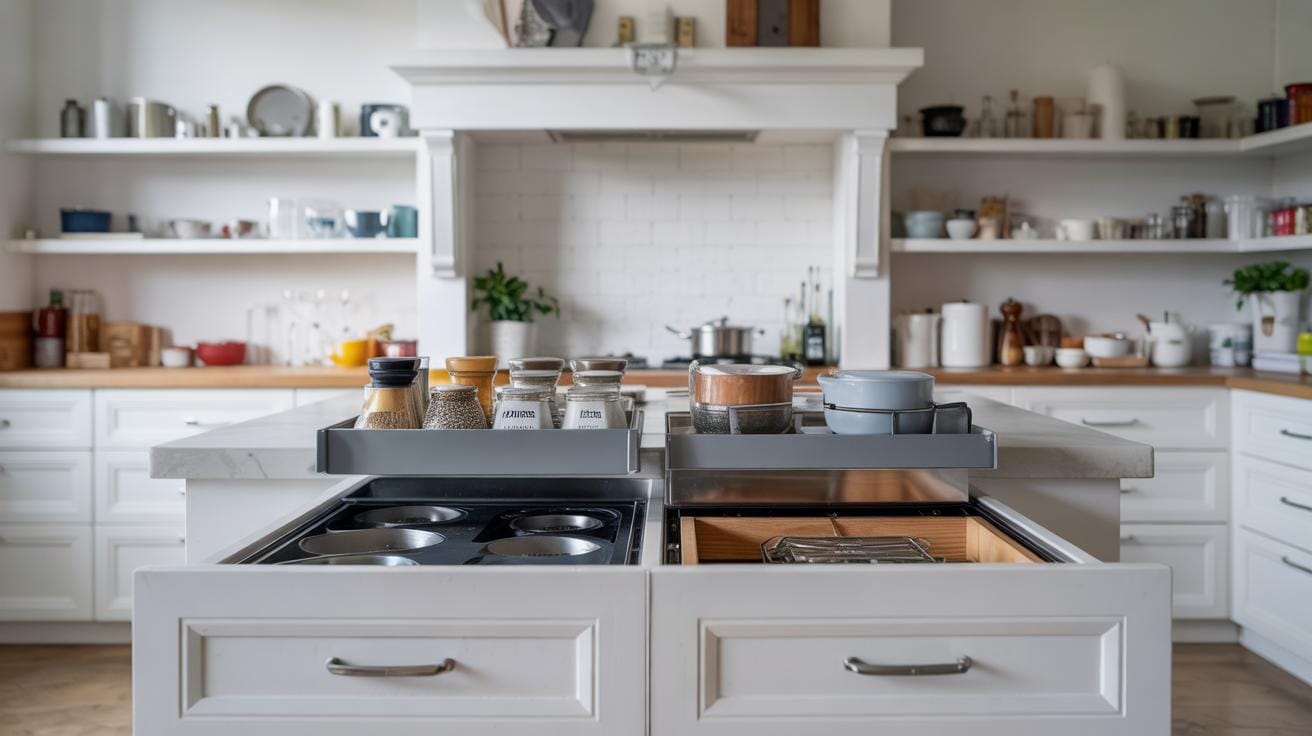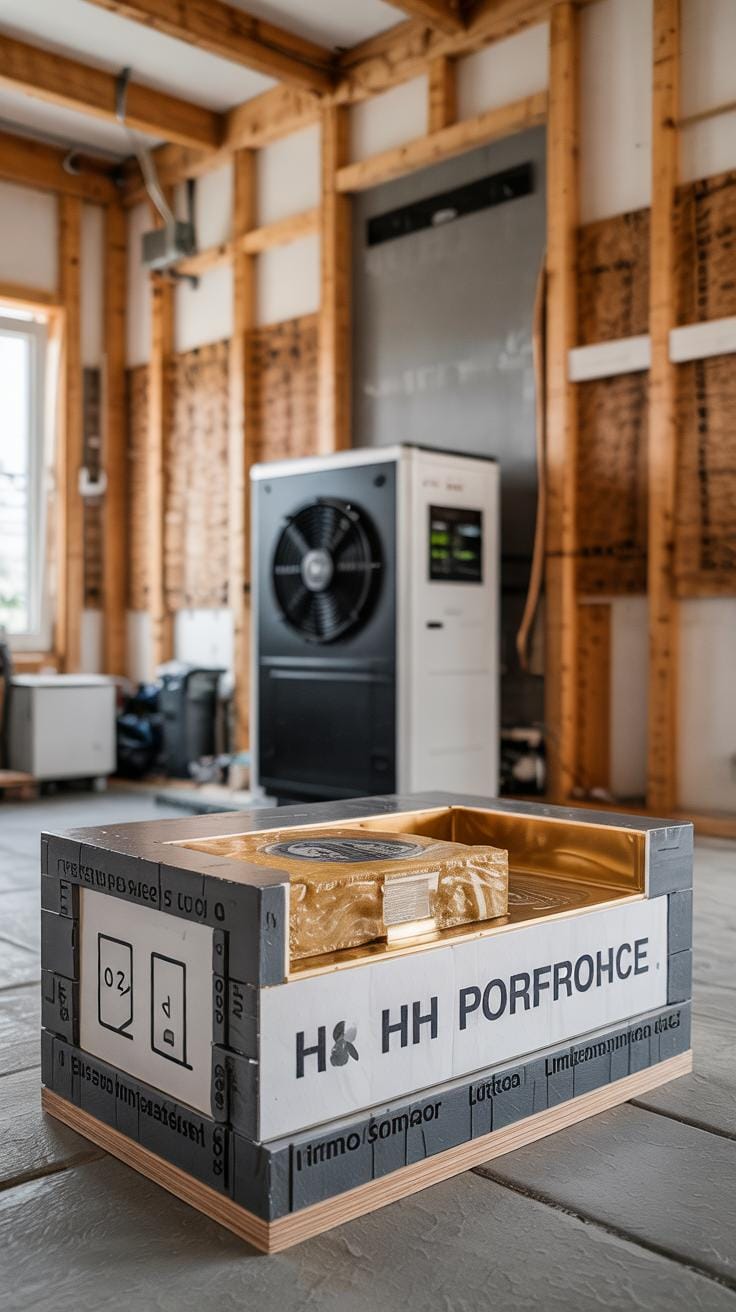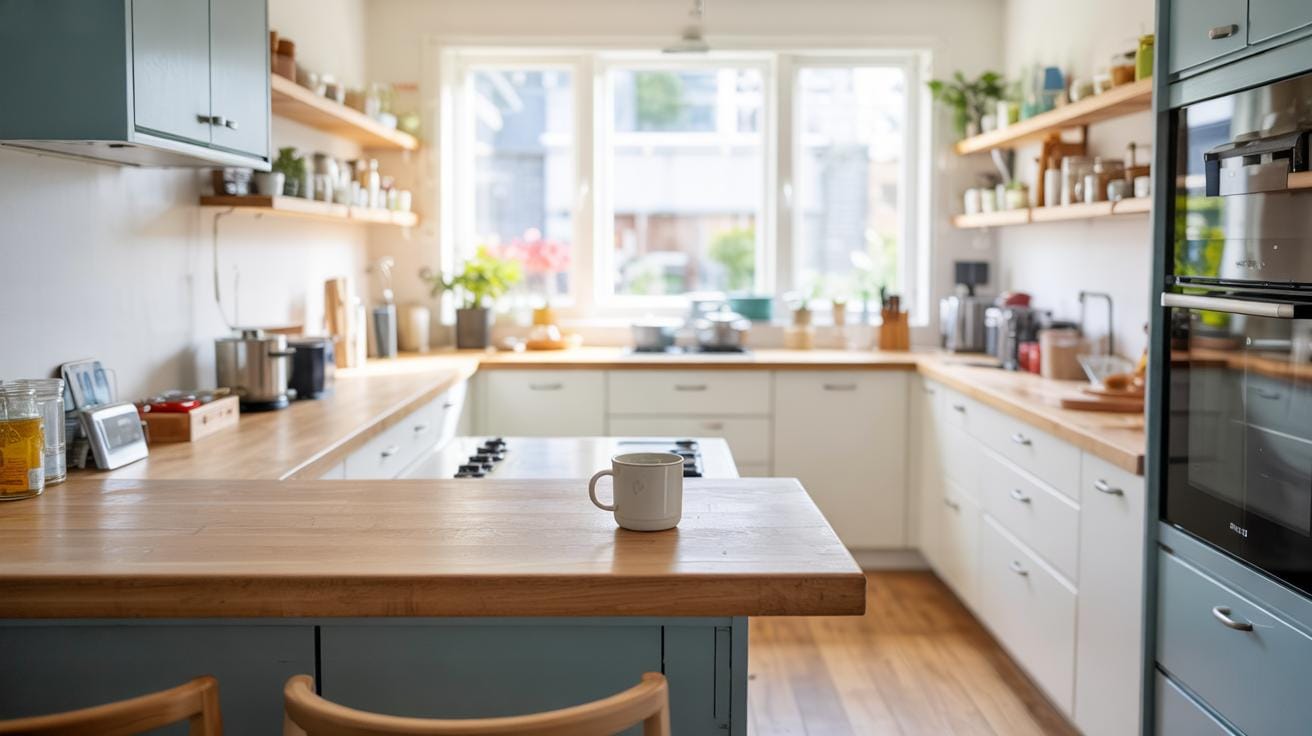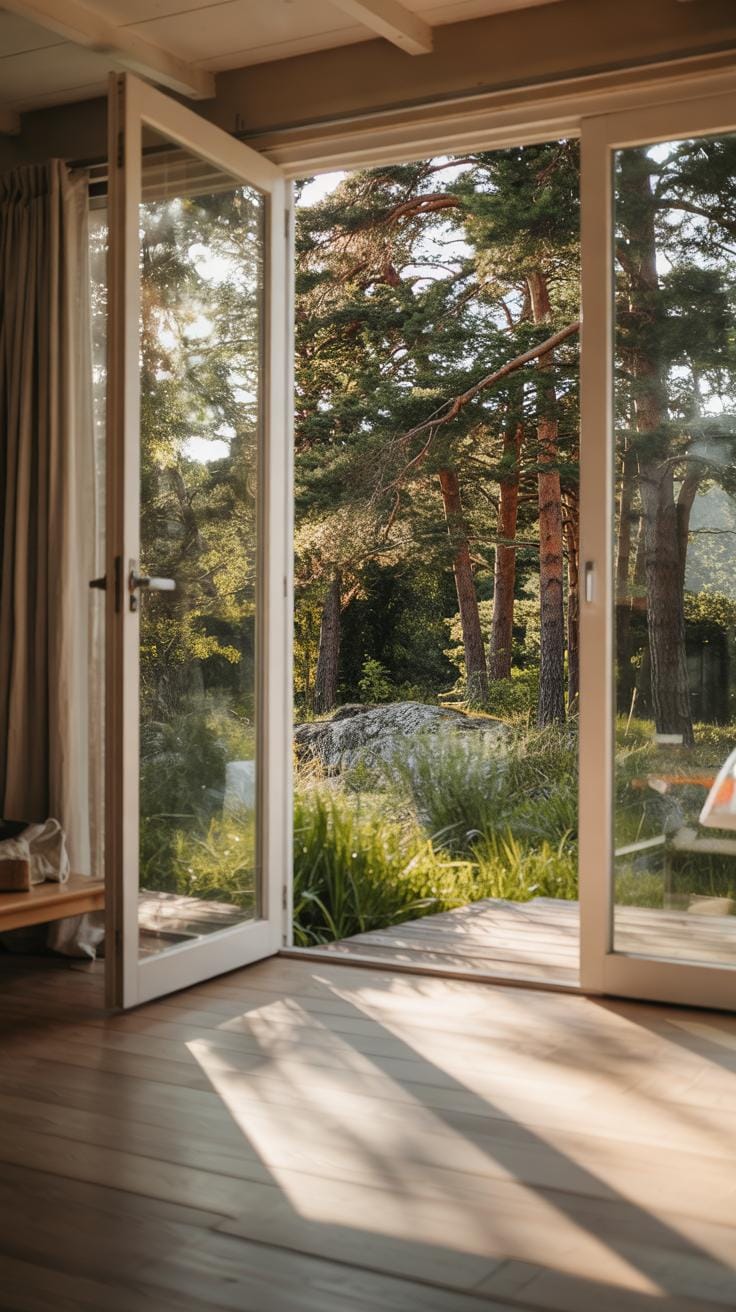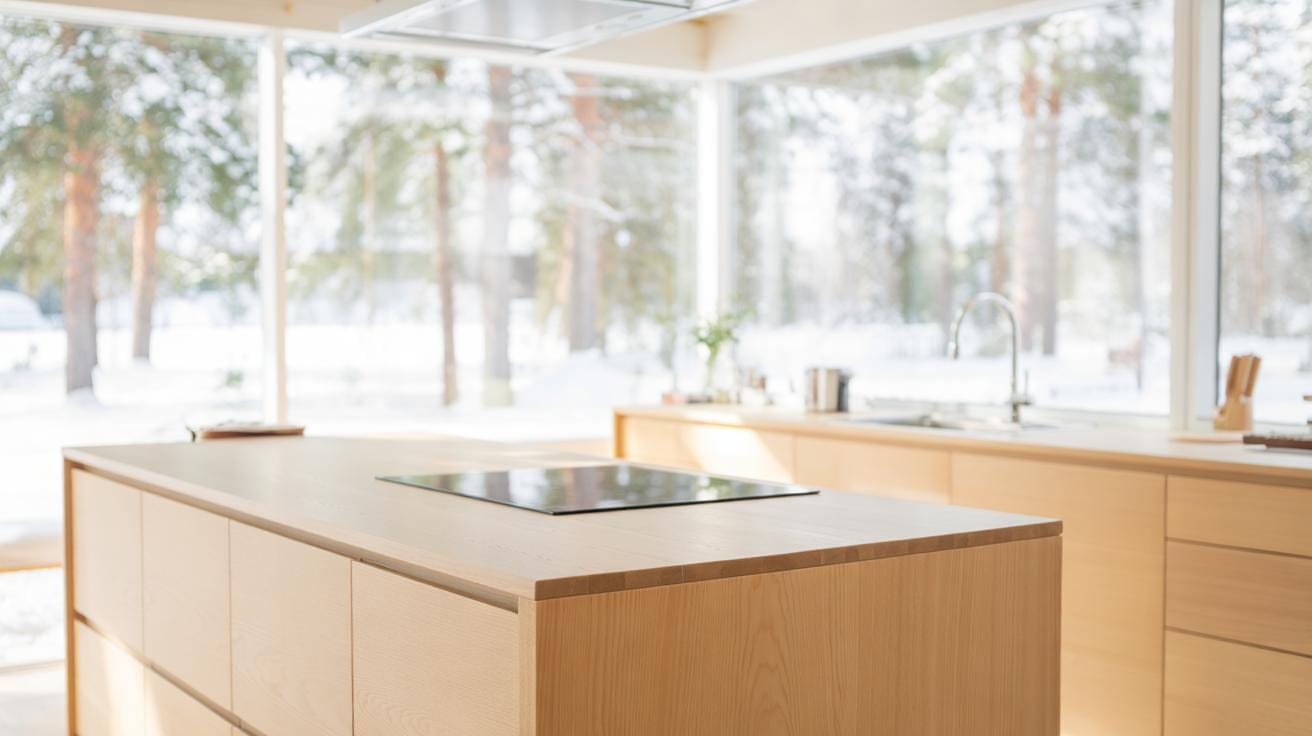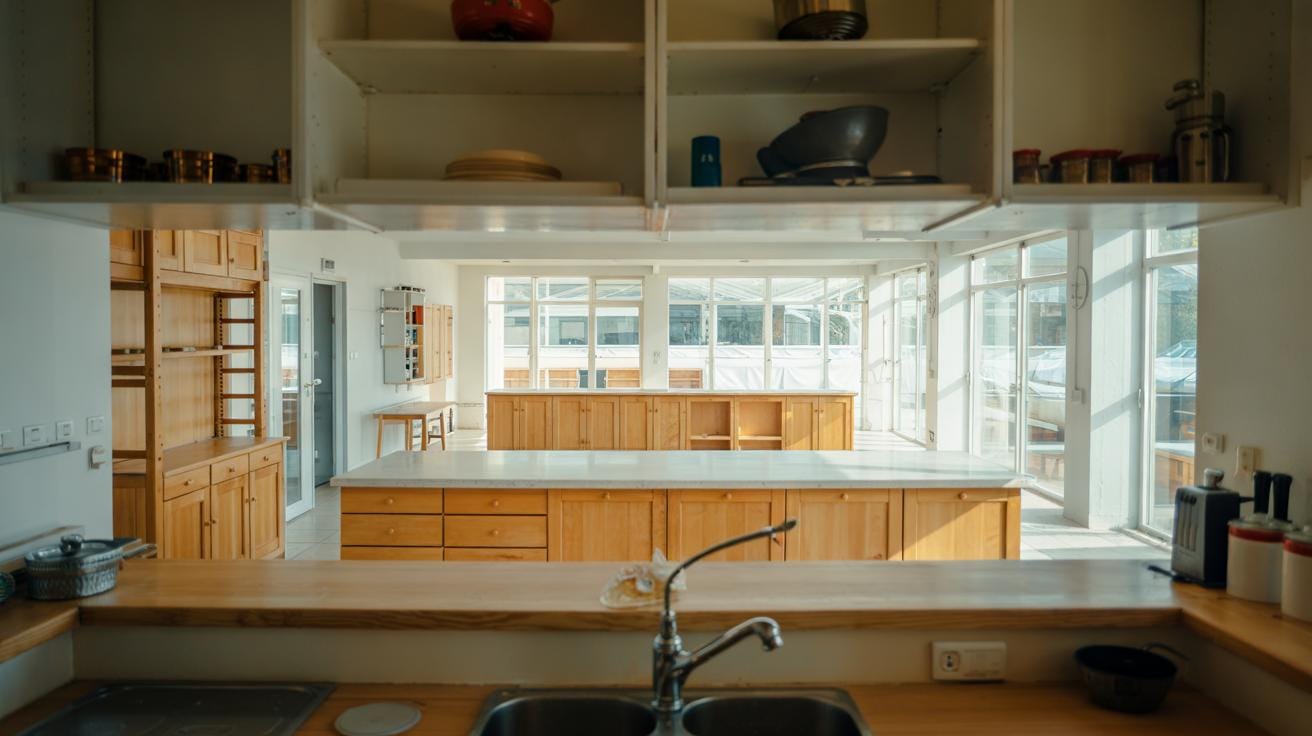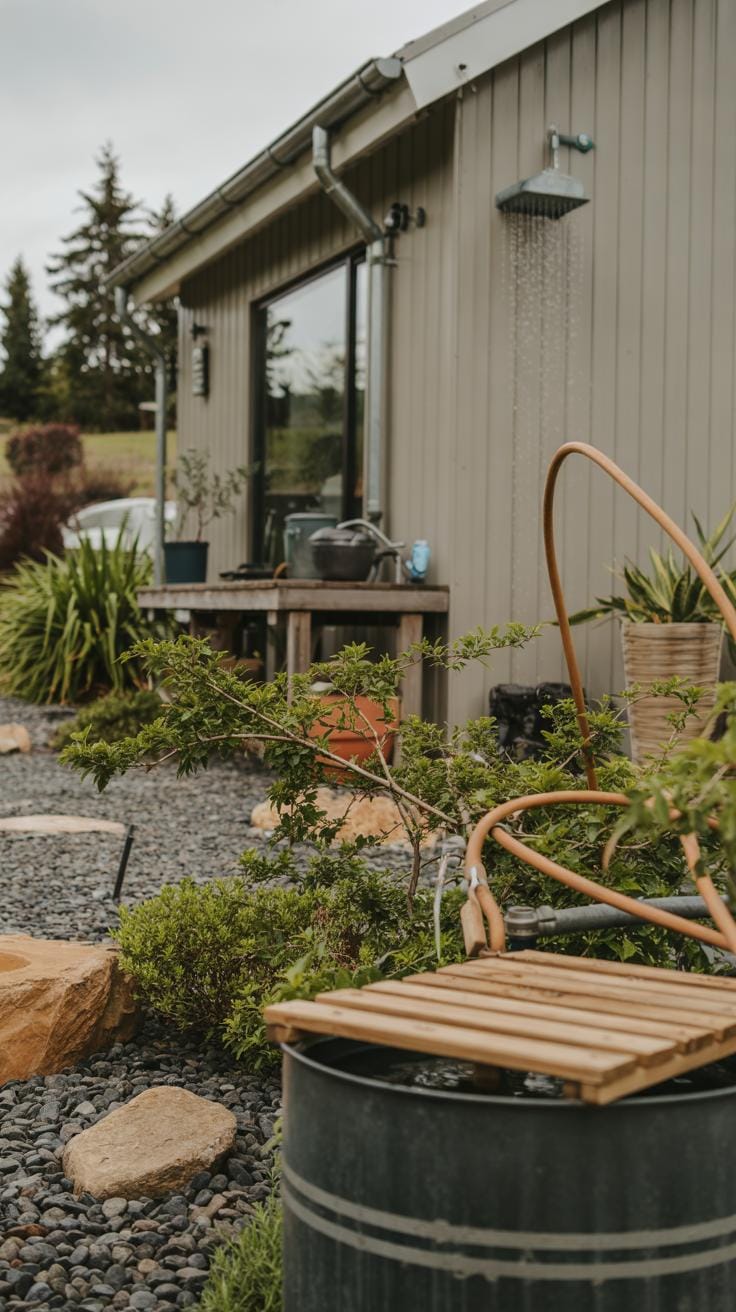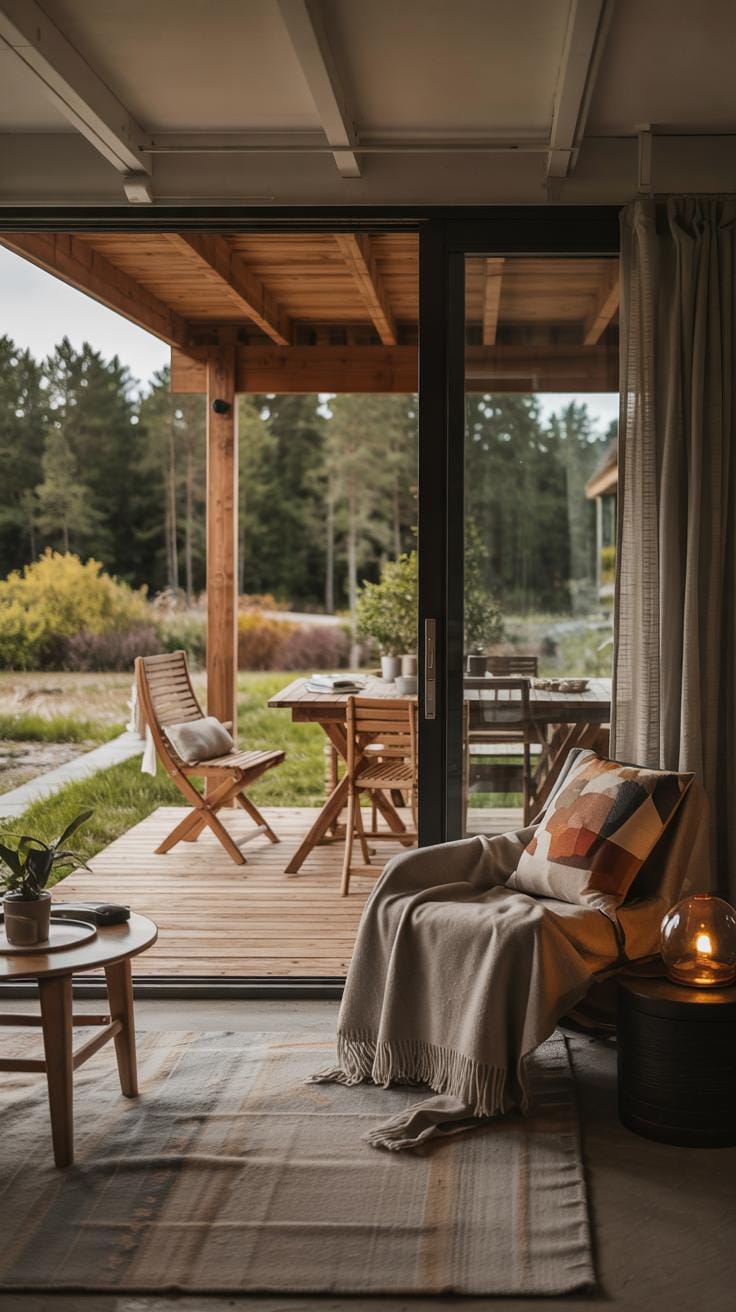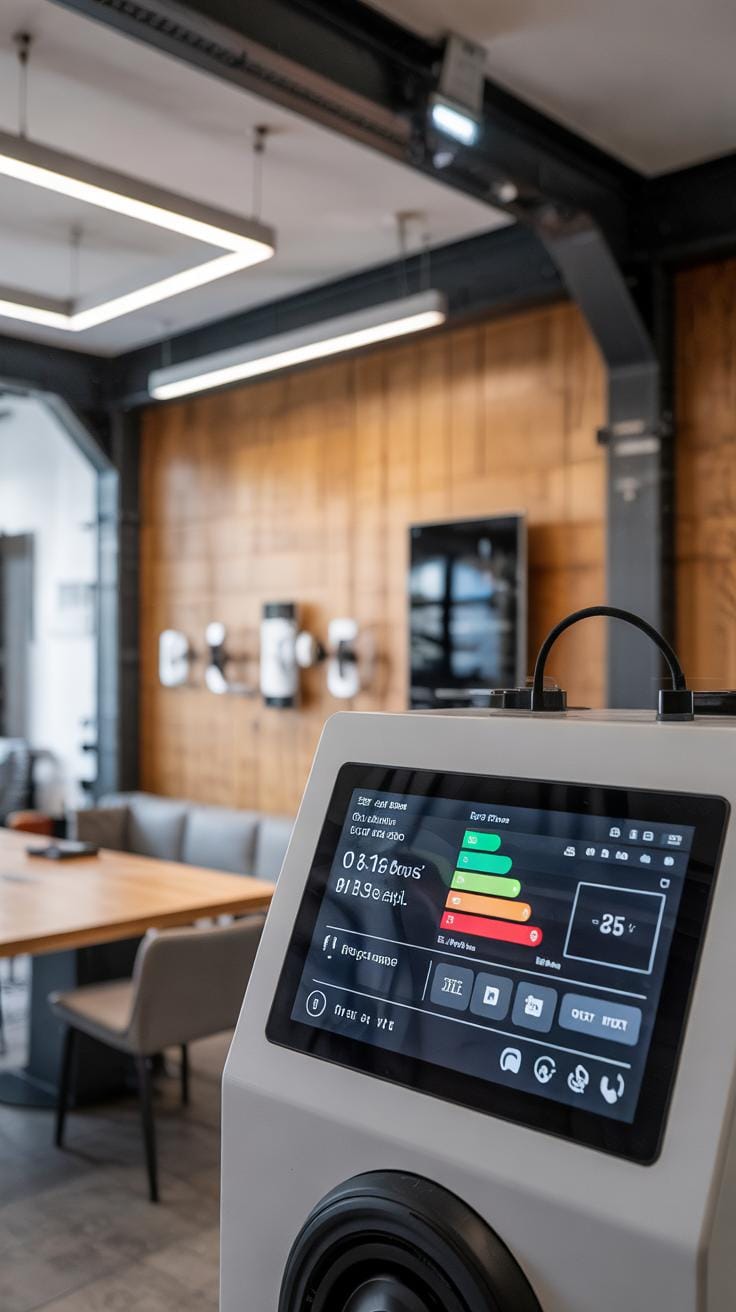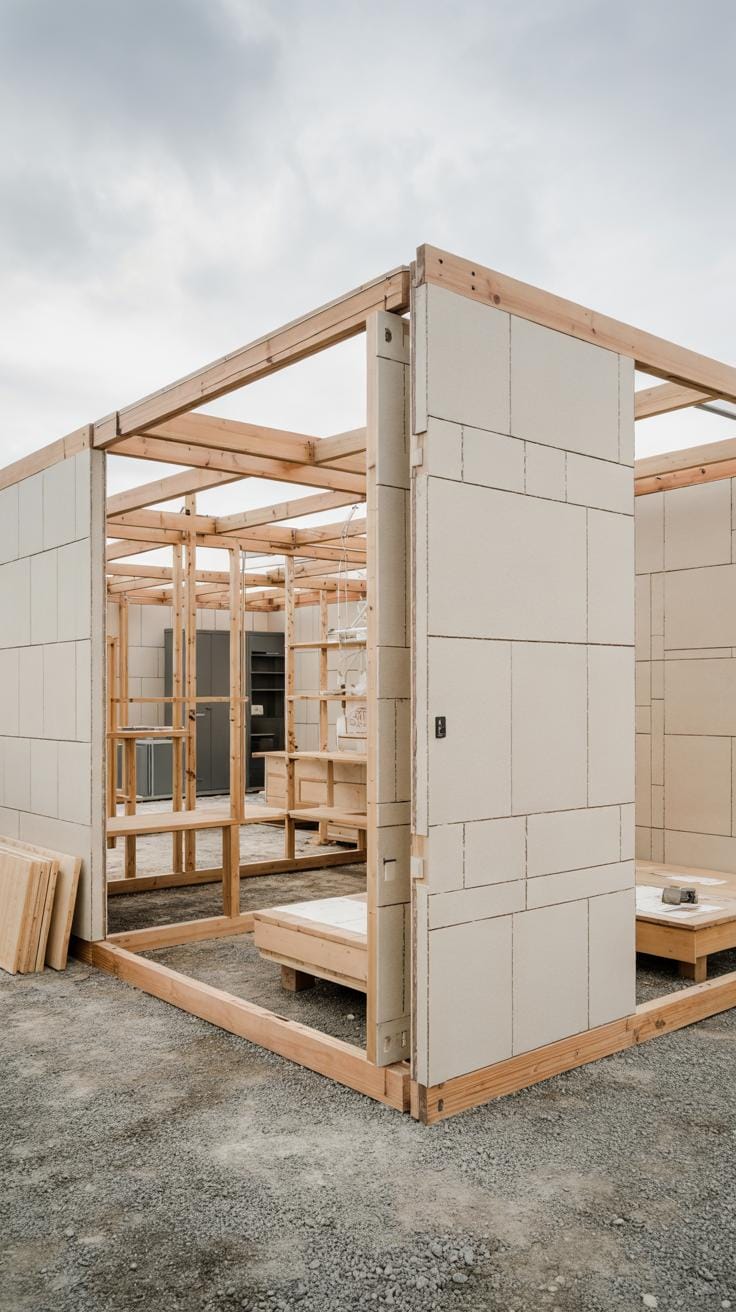Introduction
The design of a Nordic house retreat combines simplicity with functionality to create spaces that fit the unique climate and culture of the Nordic region. Nordic houses are known for their minimalistic style and connection with nature. These retreats are more than just homes; they are places to relax and rejuvenate while living in harmony with the environment.
Designing such a retreat means thinking carefully about sustainability and how the building can reduce its impact on nature. You will learn practical ways to build or renovate a Nordic house that uses natural materials, saves energy, and fits well into its surroundings. This guide will help you understand key elements that make these homes both beautiful and sustainable.
Understanding Nordic Architecture
Simplicity forms the backbone of Nordic architecture. Designs focus on clean lines and open spaces, reducing clutter and emphasizing function. Every part of the home has a purpose, which helps you live more efficiently. Functionality means the layout supports everyday needs without wasted space.
Harmony with nature stands at the core of this style. Homes use large windows to bring in natural light and connect indoor spaces with the outdoors. You can enjoy changing seasons while staying sheltered. Materials like wood and stone come directly from the landscape, softening the boundary between home and nature.
These features help Nordic houses adapt to harsh climates. Large windows capture limited sunlight during dark winters. Natural materials offer warmth and breathability. When you design your retreat, think about how these principles promote comfort, simplicity, and connection to your surroundings.
Key Features of Nordic Homes
Steep roofs are common in Nordic homes. They prevent snow buildup, protecting the structure from damage. Using wood and stone links the house to its environment. Wood offers good insulation and a cozy feel. Stone adds strength and withstands wind and moisture.
Light color schemes brighten interiors during short daylight hours. They reflect what little light there is to help your home feel open and airy. You might notice pale walls and furniture paired with natural wood floors. These choices improve mood and reduce energy use.
How does your environment influence your design? Each feature answers a practical need in the Nordic climate. By choosing the right roof, materials, and colors, you protect your home and create an inviting space year-round.
How Climate Shapes Design
Long, cold winters call for excellent insulation. Materials must trap heat inside and keep damp out. You want thick walls and windows designed to prevent drafts. This reduces your heating needs and keeps your space comfortable.
During dark months, sunlight becomes a crucial resource. Large, south-facing windows collect daylight and passive solar heat. You’ll feel more connected to nature when your home invites sunshine indoors even on cold days.
Durability matters as well. Materials need to stand up to moisture and temperature swings without losing shape or function. This means choosing wood that resists decay or stone that stays strong through frost. Every choice helps create a home that can endure harsh weather while staying energy efficient.
Choosing Sustainable Materials
Building a Nordic house retreat with sustainable materials helps protect the environment and blends your home with its surroundings. Wood from forests managed to regrow ensures you do not harm nature while providing strong, lasting timber. You can find such wood certified by organizations that verify sustainable forestry practices.
Natural stone offers durability and requires little processing, keeping the energy used in production low. It also ages beautifully outdoors, giving your retreat a sturdy, timeless look.
When it comes to insulation, choose natural options like sheep’s wool or cellulose. These materials trap heat well and come from renewable sources. They also reduce chemical use inside your house, improving indoor air quality.
Ask yourself: how can the materials you use lessen your home’s impact on nature while blending with the Nordic landscape?
Benefits of Local Materials
Using local materials lowers emissions because they don’t travel far. This helps cut down pollution during transport and reduces your house’s overall carbon footprint.
Local suppliers also benefit. They keep money within the community, supporting workers and small businesses. This strengthens the economy close to where you build your retreat.
In Nordic countries, popular local materials include pine and spruce wood, granite, and birch bark. These materials last long and suit the northern climate, reducing the need for replacements. Their production uses fewer resources compared to imported goods.
Have you considered the proven environmental benefits your home gains by sourcing materials nearby?
Selecting Eco-Friendly Building Supplies
Choose building supplies certified for eco-friendliness, such as wood with FSC certification. This label confirms the wood comes from forests where trees are replanted and habitats protected.
Low-VOC paints and finishes are important. They release fewer harmful chemicals during and after application, which keeps your retreat safer and healthier for you and the environment.
Look for products made with recycled content or those designed to last longer, reducing waste over time. Asking suppliers about the origin and environmental impact of their products helps you make better choices.
What do you prioritize when choosing materials that protect your health and that of the planet?
Energy Efficiency and Insulation
Creating a Nordic house that stays warm through long winters depends heavily on energy efficiency and insulation. Your design should trap heat inside, reducing energy use and costs. One key approach involves using advanced insulation materials that have a high R-value, which slows heat loss effectively. Think of dense mineral wool or cellulose insulation that fills walls, floors, and roofs without gaps.
Triple-glazed windows offer more than just good views. These windows hold heat better than double glazing by trapping warm air between three glass layers. They also reduce drafts, which boosts your home’s airtightness. Airtight construction works alongside insulation to prevent cold air leaks around doors, windows, and joints. Would your current design benefit from sealing all tiny cracks?
Combining these features helps maintain a stable indoor temperature. It also lowers the demand on heating systems, which saves energy. When you focus on energy efficiency from the start, your Nordic retreat becomes comfortable and eco-friendly all winter long.
Insulating for Cold Weather
Insulation in Nordic climates must block cold air and keep warmth inside. Closed-cell spray foam can seal awkward spaces and provide an airtight barrier. Rigid foam board insulation works well on foundations and exterior walls to stop cold bridges. You might also consider natural insulation like sheep wool or cork, which regulate moisture and temperature efficiently.
Effective insulation shrinks your heating bills because heat stays inside longer. For example, adding just two inches of high-quality foam around the attic can cut energy costs by 20 percent or more. Do you track how much heat your current insulation saves? Investing in better insulation means you’ll use less energy to stay comfortable.
Heating and Ventilation Systems
Heating systems in Nordic homes should work efficiently without wasting energy. Heat pumps pull warmth from the air or ground, using electricity to move heat rather than create it. This makes them a smart choice for reducing fossil fuel use. Underfloor heating spreads warmth evenly and feels comfortable underfoot during cold days.
Balanced ventilation with heat recovery improves air quality while saving energy. This system extracts warm, stale air and uses its heat to warm fresh, cold air entering the house. It prevents heat loss that happens with traditional ventilation. How much fresh air does your home need without losing warmth?
Choosing the right heating and ventilation combo keeps your retreat cozy and lowers your carbon footprint. Think about pairing insulated walls with a heat pump and heat recovery ventilator for a strong energy-saving setup. You control energy use without sacrificing comfort.
Harnessing Natural Light
Nordic homes face long, dark winters that limit the amount of daylight. Using natural light efficiently helps reduce energy use and improves comfort. Large windows placed on the south side capture sunlight during the day. Skylights bring light into central parts of the house that walls cannot reach. You can design roof angles to allow direct light deeper inside.
Light-colored walls and ceilings reflect sunlight around rooms. This reflection spreads brightness and makes spaces feel warmer. When you plan your home, think about how daylight changes through the seasons. Where can windows best catch morning or afternoon light? How can you avoid shadows in living spaces during gloomy days? These questions guide smart design choices.
Focus on letting in the most light while reducing heat loss. Your house can stay cozy without heavy reliance on artificial lighting or heating.
Window Design and Placement
Windows are key to bright Nordic interiors. Use large windows on the south to capture sunlight. Keep them smaller on the north side to avoid cold drafts. Windows with triple glazing keep warmth inside but also let in daylight. Avoid placing windows where they face strong winds or lose heat easily.
Design windows that balance size and insulation. For example, floor-to-ceiling glass walls open the view and welcome light but need careful sealing. Position windows near commonly used spaces like kitchens or living rooms to maximize daylight use. You can also add insulated curtains or shutters to retain heat at night.
Ask yourself, where will sunlight fall during winter? Can your window placement follow the sun’s path? A thoughtful layout brings in light when you need it most.
Using Light Colors and Reflective Surfaces
Interior colors affect how much light seems to fill a room. White or pale walls do not absorb much light. They bounce it around, brightening even small rooms. Using matte or satin finishes cuts glare but still boosts reflected light. You can paint ceilings with bright colors to maximize ceiling light.
Surfaces like light wood floors, polished stones, or glossy tiles reflect daylight. Furniture in light shades adds to this effect. If you prefer dark accents, balance them with surrounding light surfaces. Mirrors placed across from windows also increase light by reflecting it further inside.
Think about the feeling you want in your home. Can simple changes to wall color or floor material make your space feel warmer and more open? Using reflective surfaces is an easy way to enhance natural light without extra cost.
Incorporating Renewable Energy
Your Nordic retreat can greatly reduce its reliance on fossil fuels by adding renewable energy systems. Solar panels, geothermal heat, and wind turbines all offer clean, practical options that fit well with the region’s climate and landscape. Using solar panels helps capture energy during the sunnier months, while geothermal systems maintain steady heating in cold seasons. Small-scale wind turbines work well in open areas with steady winds.
When planning your home, think about how these technologies complement each other. Can solar power cover summer electricity needs? Will geothermal heat keep your retreat warm through the winter? Could a wind turbine fill gaps in energy production? Combining these sources can create a steady, low-impact energy supply all year.
Solar Energy in Nordic Regions
Solar panels still work effectively in Nordic countries despite shorter daylight hours in winter. During summer, long daylight periods mean solar panels can generate plenty of power. You will see energy production dip in winter, but solar systems can be sized to maximize summer output, storing excess energy or sending it back to the grid.
Consider panel placement carefully to avoid shading and make the most of the sun. South-facing roofs typically capture the most sunlight. You might wonder how to keep solar panels efficient through snow and ice; simple, angled installations allow snow to slide off naturally. Including battery storage will help you use solar energy more evenly throughout the year.
Other Renewable Options
Geothermal heating uses the ground’s stable temperature to warm your home. Pipes buried under your yard circulate fluid to absorb or release heat, keeping indoor temperatures stable even in the coldest months. Once installed, geothermal systems require little maintenance and save a lot on heating bills.
Small wind turbines fit well on properties with consistent winds and open space. Nordic coasts and rural areas often have steady wind speeds that can generate power day and night. You should check local rules and noise limits before installing turbines. Combining wind power with solar can help balance energy production across seasons and weather types.
Water Efficiency and Management
Your Nordic retreat can use water wisely by capturing and reusing what nature and daily life offer. Saving water reduces your impact on local supplies and cuts costs. Look at rainwater harvesting as a first step.
Collecting rainwater from rooftops into storage tanks gives you natural water for outside use. This lowers the need for treated water from the municipal system. For example, you can water plants or clean surfaces without tapping into city water. When you see a rain barrel outside a home, think about how small changes add up to big water savings.
Greywater recycling works alongside this system. Reuse water from sinks, showers, and washing machines after filtering it. This water suits garden irrigation and flushing toilets. Treating greywater at home means you don’t waste water that’s still useful. Have you considered how much water you pour down the drain each day? Capturing and redirecting that water can make a difference in your retreat’s water footprint.
Rainwater Harvesting Systems
Rainwater harvesting collects water from your roof and stores it for later use. This can reduce your demand on public water systems and shrink your bills. You only need gutters, a filter, and storage tanks. The process starts by directing clean water into barrels or underground cisterns.
This stored water can irrigate gardens, wash cars, or fill outdoor fountains. A Nordic home with cold, wet seasons benefits from this approach. Rain is plentiful, and catching it gives you a free water source that lowers your household’s dependence on treated water. Could you imagine how much water your landscape needs during dry spells? Using rainwater helps keep plants healthy without extra water use.
Installing these systems is cost-effective. You save on water bills, and maintenance often requires little effort. This smart setup works with Nordic weather patterns to support sustainability at your retreat.
Greywater Recycling
Greywater recycling means capturing used water from showers, sinks, and laundry to reuse it instead of flushing it away. This water contains fewer contaminants than blackwater and can support non-drinking uses.
At your retreat, filtered greywater can irrigate vegetable gardens, flush toilets, or clean outdoor areas. Systems range from simple buckets under sinks to complex plumbing setups with filters and pumps. You control how much water cycles through your garden or home tasks, keeping your water supplies balanced.
Have you thought about your household’s water cycle? Every shower, rinse, or wash could feed your plants instead of leaving the system. A greywater setup reduces freshwater use and lightens pressure on septic tanks or sewage treatment, fitting cleanly into a Nordic retreat focused on sustainability.
Both rainwater harvesting and greywater recycling give you ways to use water smarter. These methods conserve a vital resource and align with your retreat’s eco-friendly goals.
Designing Indoor and Outdoor Spaces
Indoor Layout and Comfort
Your indoor space should balance openness and coziness. An open floor plan encourages natural light and easy movement, giving your home a bright, airy feel. Consider using wood, stone, and wool finishes to add texture and warmth. These natural materials align with Nordic traditions and improve indoor air quality. Creating small, inviting corners with comfortable seating helps you relax during long winter evenings. Place these near windows to enjoy views of the outdoors and bring nature inside. Heating zones are another way to improve comfort. You can control temperatures in different rooms instead of heating the whole house, saving energy and adapting to your routine. Does your layout encourage both socializing and quiet moments? Think about where your family gathers and where they retreat for privacy.
Integrating Outdoor Living
Your outdoor area can extend your living space while blending with the natural Nordic environment. Adding terraces made from untreated wood creates a simple, durable platform for dining or soaking in fresh air. Design gardens with native plants; they require less water and support local wildlife. Consider using permeable paths to protect soil and reduce runoff. Look for spots to add benches or hammocks surrounded by trees or shrubs for privacy and shade. Outdoor lighting should be soft and energy-efficient, allowing nighttime use without disturbing local ecosystems. Can your outdoor space help you connect daily with nature? Use these features to invite the outside in and make your home part of the landscape.
Smart Home Technology for Sustainability
Your Nordic house retreat can become more sustainable through smart home technology. These systems help you use energy more wisely, balancing comfort and efficiency. Imagine a home that learns your habits and adjusts heating or lighting automatically. This reduces unnecessary energy use while keeping your spaces cozy during cold Nordic seasons.
Smart tech also helps you stay connected to your home from anywhere. You can check your energy consumption in real time and make quick changes if needed. How often do you leave lights on or heat running in empty rooms without realizing it? Smart systems solve that problem.
Using smart technology means less energy waste and lower costs. It also makes your retreat easier to manage as an eco-friendly haven. What could be more practical for sustainable living in a climate that demands constant warmth and daylight control?
Energy Monitoring and Control
Smart meters and thermostats give you direct control over your home’s energy use. These devices track the power you consume and show which parts of your house need attention. This helps you cut down on waste by identifying when heaters or appliances run unnecessarily.
The thermostat can learn your schedule, turning the heat down when the house is empty and warming it up just before you return. This avoids heating empty rooms for hours, a common cause of high energy bills in Nordic homes.
When you see energy data on your phone, you can make practical choices daily. Could you lower your heating by one degree without feeling cold? Small changes like this add up to big savings and less environmental impact.
Automated Lighting and Appliances
Automated lighting systems adjust brightness based on time of day or occupancy. In Nordic regions where daylight varies greatly, this means your lights turn on only when needed and adapt to outside light levels.
Energy-efficient appliances paired with smart controls reduce power use further. For example, a dishwasher can run during low-tariff hours, saving money and electricity. You won’t have to remember to turn it on manually.
Automation removes guesswork and makes eco-friendly living easier. Are you ready to let technology handle simple tasks so you can focus on enjoying your retreat while lowering power consumption?
Planning for Longevity and Adaptability
Designing your Nordic house retreat with future needs in mind helps you avoid costly renovations and unnecessary waste. Think about how your lifestyle might change over time. Will your family grow? Could you work from home? Planning flexible spaces lets your home evolve alongside you.
Choose materials that last through harsh Nordic winters and wet seasons. Sturdy construction means fewer repairs and less environmental impact. Durable homes need less energy to maintain, saving both resources and money over years.
Consider how rooms can serve multiple purposes. Spaces that transform from bedrooms to offices or play areas reduce the need for extra rooms. Flexible interiors help you adapt without rebuilding. Ask yourself: How could this room meet other needs in five or ten years?
Using Durable and Low-Maintenance Materials
The harsh Nordic climate demands materials that hold up against snow, wind, and moisture. Using wood with natural resistance, such as cedar or larch, keeps your exterior strong for decades. These woods require less frequent repainting or treatment, cutting down maintenance time and chemical use.
Stone and metal roofing also stand up well against heavy snowfall. They protect your home and reduce the chance of leaks or damage. Investing in quality materials means avoiding frequent replacements, which lowers waste and preserves natural resources.
Look for finishes that slow wear and age beautifully. This choice keeps your house looking good longer and reduces the need for new materials later. Choosing the right materials protects your home and the environment.
Flexible Interior Design
Adapting rooms to changing needs saves space and money. Use movable walls or sliding partitions to create open or private areas as you need them. This helps your home feel larger without adding square footage.
Furniture with multiple uses, like fold-out beds or tables with storage, offers more flexibility. These pieces adjust to guests, work-from-home setups, or growing kids’ hobbies. Think about how your lifestyle might change over time and choose designs that evolve with it.
Planning flexible interiors encourages fewer renovations and less waste. How could your rooms change to fit your future needs without rebuilding?
Conclusions
Designing a sustainable Nordic house retreat requires attention to materials, energy use, and the home’s relationship with nature. By choosing local materials like wood and stone and making use of natural light, you can create a space that feels warm and inviting all year round. Incorporating renewable energy sources and good insulation will reduce your home’s environmental footprint while keeping you comfortable.
Thinking about your Nordic retreat as part of the landscape helps you respect the local ecosystem. With thoughtful planning, your house can become a model of sustainability and a peaceful sanctuary. Small choices you make in the design and materials can have lasting effects on the environment and your quality of life. What kind of sustainable features will you choose to add to your Nordic retreat?

